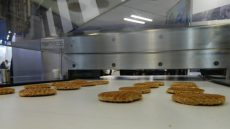Anti-counterfeit technology for alcohol
spirits industry in the fight against counterfeiting and forgery,
the manufacturers claim.
Food and beverage companies are constantly on the look-out for new forms of packaging to ensure that consumers and customs can check for authenticity, as counterfeiting can undermine the public's trust in the safety of a branded product. Sleever International has created the new Holosleeve for wine and spirits bottles using three cutting-edge technologies, the company said. As well as being shrink-wrapped and embossed with a 3D motif, giving each bottle a unique pattern, each label features a hologram that is destroyed once the consumer opens the bottle. "The result is a multi-technology innovative solution adapted to each customer and each product, thus practically inimitable, to effectively fight against forgeries and substitutions, but also grey markets because of the possibility of integrating traceable tags," the company said. The new Holosleeve technology has already been adopted by the Hennessy Cognac company, but could also be used in the perfume, cosmetics and pharmaceutical sectors, Sleever International said. According to a recent study carried out by the Organisation for Economic Co-Operation and Development (OECD), trade in counterfeit and pirated goods across national borders may have amounted to $200bn (€148bn) in 2005. However, the total could be several hundred billion dollars more when other factors are taken into account, as the study did not include domestically produced and consumed counterfeit products, or the value of pirated goods transmitted over the Internet. The OECD also stated that alcohol and beverages are among the most counterfeited articles in the world. In the EU, the private sector, through organisations such as the Confederation of the Food and Drink Industries of the European Union (CIAA), has consistently strived to improve intellectual property protection in order to keep EU trade competitive. There are some signs that the problem is diminishing in Europe. In 2006, the amount of counterfeit food and drink products seized at the EU's borders decreased by 77 per cent, according to European Commission figures. Turkey remains the main source of fake food and beverages, accounting for 18 per cent of the total. Other culprits include China (16 per cent), Singapore (12 per cent), Hungary (seven per cent), and Tunisia (six per cent). In terms of overall quantities of all food and non-food items seized, China accounts for 80 per cent of all articles seized at the EU's borders. EU legislation, which came into effect on 1 January 2007, requires all of the bloc's importers and exporters to have a special security certificate for easier access across borders. Companies that fail to comply with the new rule could face crippling delays to their exports and imports, burdening them with extra costs, according to analysis by Ernst & Young.





